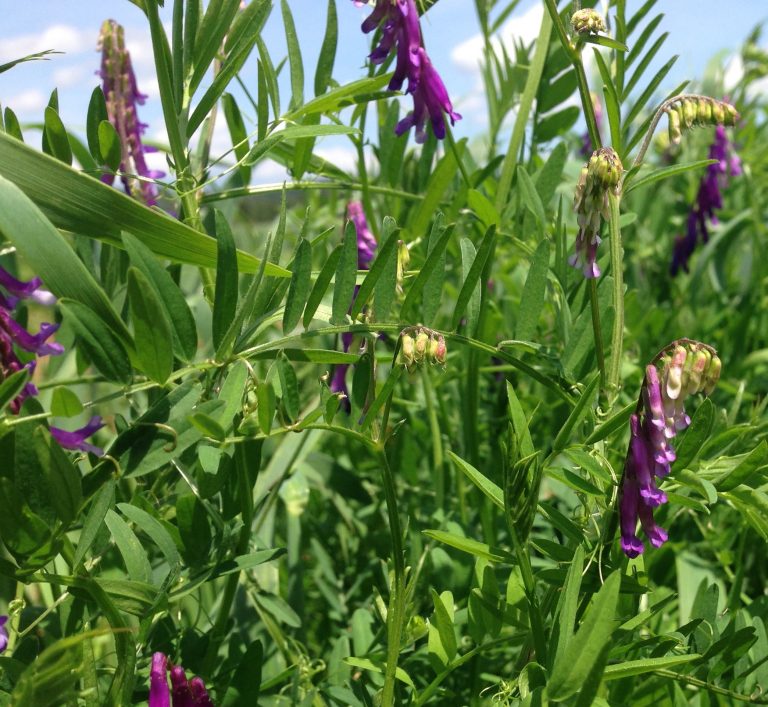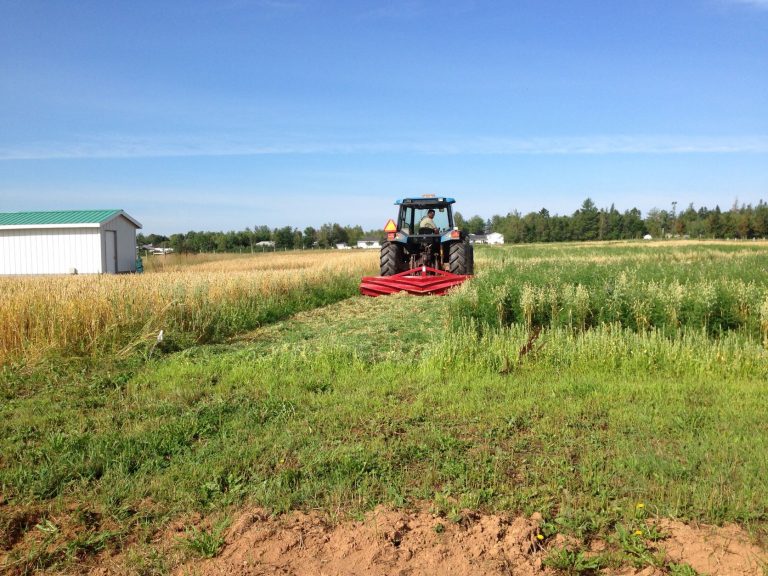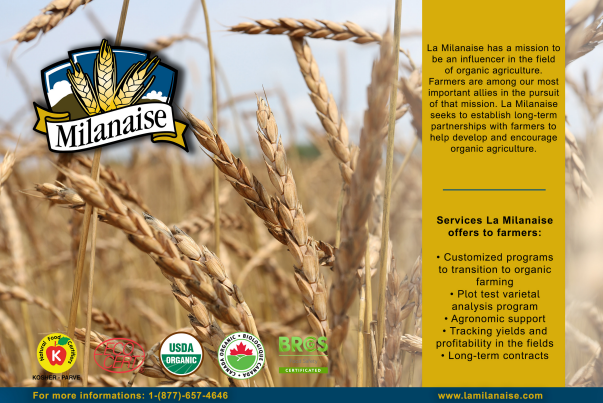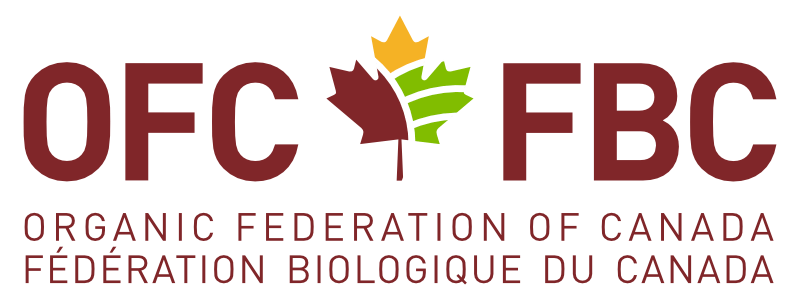By Carolyn Marshall
Nova Scotia Federation of Agriculture
Incorporating cover crops into crop rotations is a widely accepted best management practice for a variety of reasons. The definition of a cover crop is broad and encompasses any crop whose main purpose is not to be harvested for sale.
Cover crops are grown to improve or protect the soil and this can be achieved in many targeted ways. They can be chosen for the purpose of reducing soil erosion in a period when the soil would typically be bare (the literal definition of a “cover” crop), to break up a disease cycle, add nutrients, build organic matter, and reduce nutrient leaching, among other uses.
This wide variety in uses for cover crops means that there are many decisions to be made when incorporating cover crops into a rotation. Plant species, time of planting, time of termination, and method of termination all need to be decided. In terms of method of termination, cover crops can be:
• Terminated chemically (in non-organic systems),
• Terminated physically, either with tillage or a no-till crop roller,
• Timed so they are winter-killed
Another method that has not received much attention in Canada is grazing by livestock.

The majority of research in using livestock to graze a cover crop has occurred in the Midwestern United States, although Dr. Martin Entz at the University of Manitoba and his collaborators have often advocated for incorporating livestock into crop rotations through the use of forages. However, trials are happening, including small on-farm trials of grazed cover crops in Nova Scotia.
When choosing to adopt cover crop grazing, you are not just choosing plant species to address your soil needs, you’re also considering the needs of the livestock. The needs of both the soil and livestock can often be met by using cover crop mixes – often combinations of grains, legumes, brassicas, and other broadleaf plants such as sunflower. For example, well planned mixes can provide the right mix of protein for a growing cow while avoiding some of the potential risks, such as bloat, and provide soil benefits such as suppressing soil nematodes.
Many of these studies of grazed cover crops have similar findings. There is little improvement of soil health compared to cover crops terminated without livestock, although several studies have shown increases in soil aggregate stability – an important soil measure that can, for example, impact susceptibility to erosion and soil microbial activity. However, many of these studies are only a few years in duration. Since soil carbon pools are large and take years or even decades to show changes due to management, longer-term studies could reveal impacts on soil health not detectable over shorter time frames.

"The more you farm like nature, the more it can reduce your inputs and the more money you can make”.
- Ray Archuleta, Conservation Agronomist with NRCS in the documentary Kiss the Ground
While these small gains in soil health may be discouraging at first, those same studies often concluded that incorporating livestock into the rotation through cover crop grazing had an economic benefit. So, while incorporation of livestock into cropping systems will make operations more complicated, there is potential to not only increase profitability, but also create economic stability through diversification. This type of diversification in a farm system builds resiliency, which is only going to grow in importance as we face a changing climate and shifting weather patterns.
Use of cover crops can often be a (short-term) financial cost – although the long-term benefits can certainly add up in soil health and system resiliency. However, incorporating grazing can turn this cost into a gain. This could make cover cropping more appealing to a wider range of producers, provided they can access the knowledge and support to get a cover crop grazing system going.
A North Dakotan rancher, Gabe Brown, also appears in the documentary, Kiss the Ground (available on Netflix). He uses livestock to winter graze his cover crops. When asked about the environmental issues and concerns around animal production, he responds, “The problem isn’t the animal, the problem is where the animals are at”. After years of crop loss through weather events, the diversification of his operation has improved his bottom line. “I build resiliency in an ecosystem.”
The Organic Science Cluster 3 is led by the Organic Federation of Canada in collaboration with the Organic Agriculture Centre of Canada at Dalhousie University, and is supported by the AgriScience Program under Agriculture and Agri-Food Canada’s Canadian Agricultural Partnership (an investment by federal, provincial and territorial governments) and over 70 partners from the agricultural community.
This magazine may be cited as: Geldart, E.. Graves, M.E., Boudreau, N., Wallace, J., and Hammermeister, A.M. (Editors). 2022. Organic Science Canada. Volume 4. Organic Federation of Canada, Montreal, QC and Dalhousie University, Truro, NS. 30 pp. www.dal.ca/oacc/oscIII



